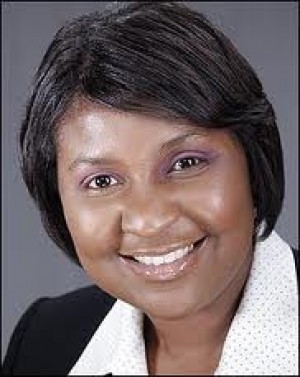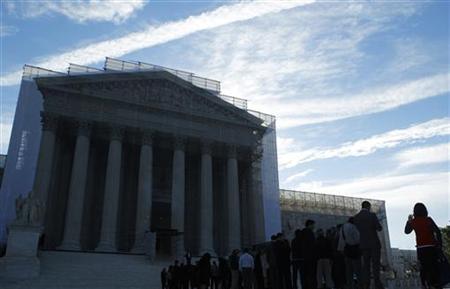While the U.S. faces a growing addiction to prescription pain killers, pharmaceutical companies are marketing and influencing research to promote the use of opiates.
Washington Post /
December 31. 2012
Portsmouth, Ohio — Over much of the past decade, the official word on
OxyContin was that it rarely posed problems of addiction for patients. The label on the drug, which was approved by the FDA, said the risks of
addiction were “reported to be small.”
The New England Journal of Medicine, the nation’s premier medical
publication, informed readers that studies indicated that such painkillers pose
“a minimal risk of addiction.” Another important journal study, which the manufacturer of OxyContin
reprinted 10,000 times, indicated that in a trial of arthritis patients, only a
handful showed withdrawal symptoms.
Those reassuring claims, which became part of a scientific consensus, have
been quietly dropped or called into question in recent years, as many in the
medical profession rediscovered the destructive power of opiates. But the damage
arising from those misconceptions may have been vast.
The nation is confronting an ongoing epidemic of addiction to prescription
painkillers — more widespread than cocaine or heroin — that has left nearly 2
million in its grip, according to federal statistics.
“It turns out that the doctors didn’t know what they were talking about,”
said Barbara Howard, whose daughter Leslie, a home-care nurse, died of an
overdose in 2009 in this small Appalachian town devastated by the epidemic. She
had developed a habit after knee surgery. She left behind a 9-year-old son.
“Leslie trusted the doctors. We thought the doctors knew what was best. But
they didn’t. We — and lots of the other victims — had no warning.”
Conflicts of interest
A closer look at the opioid painkiller binge — retail prescriptions have
roughly tripled in the past 20 years — shows that the rising sales and
addictions were catalyzed by a massive effort by pharmaceutical companies to
shape medical opinion and practice.
Opioids are a class of powerful drugs, often used for pain, that includes
morphine, heroin and brand names such as OxyContin, Vicodin and Percocet. For years, doctors had been cautious about prescribing opioids to anyone
except patients with cancer or in acute pain.
But drug manufacturers and some pain specialists helped create a body of
scientific research assuaging the long-standing worries about opioids and pushed
to expand the use of the drugs in people with chronic pain — bad backs,
arthritis, sore knees.
Their studies reported minimal risks of addiction and dependence. These, in
turn, were accepted by the FDA and the nation’s medical journals. State medical
boards made their rules for prescribing opioids more liberal. Academic and
industry articles dismissed the old fears as “opiophobia.”
These reports reached doctors through marketing efforts and told them that
there were few risks in using opioids to treat chronic pain.
But according to a Washington Post examination of key scientific papers, a
court document and FDA records, many of those claims were developed in studies
supported by Purdue Pharma, the maker of OxyContin, or other drug manufacturers.
In addition, the conclusions they reached were sometimes unsupported by the
data, and when the FDA was struggling to come up with an opioid policy, it
turned to a panel populated by doctors who had financial relationships with
Purdue and other drugmakers.
●A review of 16 key clinical trials on the subject shows that five were
funded by Purdue and an OxyContin distributor, two were co-authored by Purdue
employees, and two were sponsored by other drug companies making different
opioids. None of the 16studies showed clear warnings about the addiction dangers
or the physical dependence generated by the drugs. The low rate of addiction
reported in these studies is at odds with more recent findings indicating that
diagnoses of addiction are common in opioid patients.
●Internal company documents indicate that one of the key published studies
sponsored by Purdue — the one reprinted 10,000 times — omitted suspected cases
of withdrawal symptoms. The published paper offered assurance that only two of
more than 100 OxyContin patients had withdrawal symptoms; the internal documents
showed that at least 11 exhibited possible signs of withdrawal, and some experts
say it is likely that at the doses given, most of the patients would have
experienced withdrawal.
●To refine its policy on opioids, the FDA convened a key meeting in 2002 and
invited 10 outside experts for advice. Five of them reported having served as
speakers or investigators for Purdue. Three others reported working as speakers
for or as advisers and consultants to other pharmaceutical companies.
One of those FDA advisers, Russell Portenoy, who was then the chair of the
Department of Pain Medicine and Palliative Care at the Beth Israel Medical
Center in New York, has since expressed regret for his evangelism on behalf of
opioids.
He was “trying to create a narrative so that the primary care audience would
. . . feel more comfortable about opioids,” Portenoy said in a
2010
interview with Andrew Kolodny, the chief of a group seeking to rein in drug
use, Physicians for Responsible Opioid Prescribing. “Because the primary goal
was to destigmatize [opioids], we often left evidence behind.
. . .
“To the extent that some of the adverse outcomes now are as bad as they have
become in terms of endemic occurrences of addiction and unintentional overdose
deaths, it’s quite scary to think about how the growth in that prescribing
driven by people like me led in part to that occurring.”
Through a spokesman, Portenoy declined to comment for this report, but he has
said that he continues to believe that many patients with chronic pain can
benefit from opioids, though the estimates of how many patients may become
addicted are larger than previously thought.
At the time of the 2002 FDA meeting, Portenoy reported being a speaker for
Purdue Pharma. He also reported involvements on contracts and grants with
Parke-Davis, Boehringer Ingelheim, Elan, Ortho Biotech, Endo, Ametek, Medtronic,
Purdue Pharma, Pfizer, Janssen, Abbott, Curatech, Ortho-McNeil and Searle.
James Heins, a spokesman for Purdue, said that “it is implausible that our
marketing caused an upsurge in overall prescriptions of opioids or in the
incidence of abuse” because the company commands only a small portion of the
painkiller market.
Moreover, he said, the notion that the risk of addiction was small was “not
based on studies funded by Purdue but rather on the larger body of medical
literature and clinical experience.”Even today, he said, it is difficult to say exactly how many people who are
prescribed opioids become addicted.
‘Absolutely devastating’
In few places are the effects of the opioid epidemic clearer than in
Portsmouth, a town near Ohio’s borders with West Virginia and Kentucky. About
10 percent of babies are born addicted to opioids. At one point, nine “pill
mills” operated out of this region of 80,000 people. About 20 people a year die
of drug overdoses. Last year, for every resident, more than 100 doses of opioids
were prescribed and dispensed.
Ask someone here whether the risks of opioid addiction are minimal, and some
snort or roll their eyes.
“Around here, we call it ‘pharmageddon,’ ” said Lisa Roberts, the public
health nurse for the town, whose primary job is to reduce the fatalities
associated with drug use. “This has been absolutely devastating to Appalachia.
From what we’ve seen, the risks of addiction were tremendous.”
For decades, many doctors had been wary of prescribing opioids except for use
by cancer patients and the terminally ill.
In 1992, for example, a survey of state medical board members, most of them
physicians, found that only 12 percent described prescribing opioids for an
extended period for chronic pain as a “lawful and generally acceptable medical
practice.”
Advocates for opioid prescription, backed in part by drugmakers, set about
seeking to change those attitudes. More than 20 states changed their rules. And
in December 1995, these marketing efforts surged as Purdue Pharma introduced
OxyContin, a controlled-release form of the opioid oxycodone.
From 1996 to 2000, the company doubled its sales force from 300 to 671,
according to a 2003 report by what was then the General Accounting Office. The
amount of sales bonuses Purdue Pharma offered tied to OxyContin grew from $1
million a year to $40 million a year. It sponsored pain-related Web sites,
advertised in medical journals and paid influential doctors such as Portenoy to
talk to other physicians.
As the number of overdoses and reports of addicts rose in the early 2000s,
key questions arose. How were the addicts becoming addicted? Was it by going to
the doctor with a legitimate pain and getting a legitimate prescription? Or was
it just people seeking a high and buying the prescription drugs off the
street? If it was only the latter, limiting prescriptions might have little direct
effect on the problem and could penalize pain sufferers. But it was both.
Although many addicts started on opioids just to get high,
experts say, a good portion arrived at their habits after coming into contact
with opioids after a doctor’s visit for a legitimate pain. That’s how Leslie
Cooper came to the drug, and it is reportedly the way some celebrities became
addicted: Rush Limbaugh, Matthew Perry, Cindy McCain.
Other trials have reported that significant numbers of pain patients are
addicted. In one review out of Yale School of Medicine, investigators found that
diagnoses of addiction are “common” in patients given opioids for back pain,
with as many as 24 percent engaging in “aberrant” or peculiar ways of taking the
pills.
Early on, officials at the Drug Enforcement Administration perceived the
danger to patients.
“The company’s aggressive methods, calculated fueling of demand and the grasp
for major market share very much exacerbated OxyContin’s widespread abuse and
diversion,” a November 2003 memo from the agency said. “The claim in Purdue’s
‘educational’ video for physicians that opioid analgesics cause addiction in
less than one percent of patients is not only unsubstantiated but also dangerous
because it misleads prescribers.”
But amid the marketing blitz, concerns about addiction in patients appear to
have faded from the medical profession. The FDA, which must approve drug labels, allowed Purdue to say on its label:
“The development of addiction to opioid analgesics in properly managed patients
with pain has been reported to be rare.”
The agency warned that drug abusers and addicts might try to obtain the
drugs, but it indicated that the risks seemed minor for patients: “We do not
know how often patients with continuing (chronic) pain become addicted to
narcotics, but the risk has been reported to be small.” The agency, however, would later change its mind.
By 2008, the claims that the risks of addiction in patients were small were
removed from the OxyContin label, after “extensive negotiations” with Purdue, an
FDA spokeswoman said.
“The labeling information, including language regarding addiction, has
evolved over time as data has become available,” Morgan Liscinsky said.
The FDA did not say what evidence led the agency to allow the previous claims
or what new findings led it to ask for the removal of those claims.
Early on, however, the agency relied on industry experts for advice. In the
2002 FDA meeting, for example, eight of the 10 invited experts had
connectionswith pharmaceutical companies. Of those, five had served as speakers,
consultants or investigators for Purdue, including Portenoy and Kathy Foley, a
neuro-oncologist at Memorial Sloan Kettering Cancer Center. Together, Portenoy
and Foley had published a key study on opioids in 1986 that found that only two
of 38 patients seemed to abuse the drugs and that both had histories of
substance abuse.
“Their past work with industry should not preclude them from sharing their
expertise with government agencies or their peers in the medical community,”
Heins, the Purdue spokesman, said. The FDA and doctors also could turn to a spate of other trials that seemed to
suggest there was little reason to worry that chronic pain patients could get
addicted to opioids.
Take, for example, a 2003 report in the New England Journal of Medicine,
which reviewed the conclusions from several studies.
“The general finding is that patients with chronic pain . . .
can achieve satisfactory analgesia . . . with a minimal risk of
addiction,” it said, while questioning the use of high doses.
What may be most striking about the paper, though, is that its lead author
has become one of the top critics of opioid prescribing habits. But Jane
Ballantyne, a pain specialist at the University of Washington, said that at the
time there were very few clinical trials that showed any sign of an addiction
risk.
“There were very few studies then that suggested that any more than 8 percent
of people on prescription opioids exhibited addiction-type behaviors,”
Ballantyne said. Now, she said, the understanding is that the number may be as
high as 50 percent.
How did all these studies — co-authored by doctors with university
affiliations and published in academic journals — lead to conclusions that now
are in dispute?
One reason, according to critics, is that most of the studies were conducted
by drug companies.
“A pharmaceutical company that has a vested interest in promoting their
product should not be seen as a reliable source of safety information,” said
Orman Hall, director of the Ohio Department of Alcohol and Drug Addiction
Services. “Some of those estimates are ludicrous.”
Consider the 16 clinical trial reports that Ballantyne highlighted and used
in her article, which reflect the medical literature at the time. Her summary
did not discuss sponsors of the studies. But of those 16, six were sponsored by
Purdue Pharma or co-authored by its employees, one was sponsored by Mundipharma,
which distributed OxyContin and other opioids, and two were sponsored by another
drug company or co-authored by drug company employees.
In the trials, patients were given an opioid for pain, but in most, there
were no systematic checks for withdrawal symptoms or addiction. Instead, in most
of the trials, regardless of whether they were sponsored by drug companies, the
investigators generally found that the benefits of pain relief outweighed the
risks of side effects such as constipation and dry mouth.
If investigators were looking for signs of addiction, they weren’t looking
hard.
“In the absence of rigorous evaluation and surveillance, it’s hard to know
whether the low levels of addictive behavior reported in those studies are
accurate,” said David A. Fiellin, a professor of medicine at Yale with an
expertise in addiction.
Fiellin noted that the design of a study can dramatically change the results
and that entrusting the design to scientists with conflicts of interest could
introduce bias. What patients are admitted to the trial? How are side effects
measured? How large are the doses?
“All of those are scientific decisions that should be made by people without
any regard for how the findings will affect the company’s bottom line,” Fiellin
said, adding that the government could play a larger role in funding.
Data Discrepancy
In one of the studies sponsored by Purdue that Ballantyne covered, and that
played a large role in the marketing of OxyContin, there appear to have been
significant discrepancies between the data that were gathered and those that
were published.
A March 2000 issue of the Archives of Internal Medicine published a study
that followed 106 arthritis patients treated with OxyContin for several
months. Six times during the trial, researchers intentionally stopped the doses. Remarkably, according to doctors who study addiction and dependence, there
were no reports of withdrawal during those respites.
Two patients had withdrawal problems, but one was at the end of the study,
and the other had simply run out of the medication.
“Withdrawal syndrome was not reported as an adverse event for any patient
during the scheduled respites,” the authors reported.
The trial also showed that the drug was effective and was embraced by the
Purdue marketing team, which ordered 10,000 reprints to distribute to its sales
staff, with instructions to highlight the finding on withdrawal. But according to company documents disclosed in a court case, the paper left
out several cases of withdrawal.
Inside Purdue, supervisors and employees reviewed a more complex set of data,
according to a document signed by company attorneys and prosecutors, which
accompanied a 2007 settlement in which federal prosecutors charged Purdue with
misbranding the drug. The document has not previously been linked to the Archives article.
“Multiple” patients, a company review said, “directly stated or implied that
an adverse experience was due to possible withdrawal symptoms.” Eleven study patients “reported adverse experience due to possible withdrawal
symptoms during these periods,” according to the court document.
How did this discrepancy arise?
One of the authors of the Archives article, Roy Fleischmann, a clinical
professor of medicine at the University of Texas Southwestern Medical Center at
Dallas, said the authors were given the data by Purdue.
“We reported on the data which was provided to us,” he wrote. He said the discrepancy may have arisen because some of the side effects —
such as insomnia, nausea and anxiety — were not characterized by Purdue “as
withdrawal symptoms, although, in retrospect, they probably were,” he said in an
e-mail.
Doctors who have treated OxyContin addicts, and some former addicts,
moreover, say that considering the doses given to the patients in the trial and
its duration, even the internal document undercounted patients reporting
withdrawal symptoms. They say the majority of patients were likely to have
suffered withdrawal symptoms when the drug was cut off.
At the doses given in the trial, most patients are “pretty consistently”
going to have withdrawal symptoms, said Phillip Prior, a board-certified
addictionologist in the Portsmouth area who has treated thousands of patients
addicted to opioids.
He said the lower estimates are “flawed conclusions from a very flawed
study.”
“I’ve never seen anyone come off of them and not get withdrawal,” said Billie
Taylor, 42, a former addict who works at a treatment center in Portsmouth. “I
would have quit a lot earlier if it had not been for the withdrawal. You feel
like you want to die. Even if you take them at prescribed levels, you get
withdrawal.”
“You could say these marketing tactics are merely concerning,” Prior said.
“But I think of them as satanic. What the data are telling us is that these
drugs are ruining people’s lives.”
 Former Maryland State Del. Tiffany Alston declared bankruptcy seven
months before she tried to use her campaign funds to cover her wedding
expenses, according to court records.
Former Maryland State Del. Tiffany Alston declared bankruptcy seven
months before she tried to use her campaign funds to cover her wedding
expenses, according to court records.





